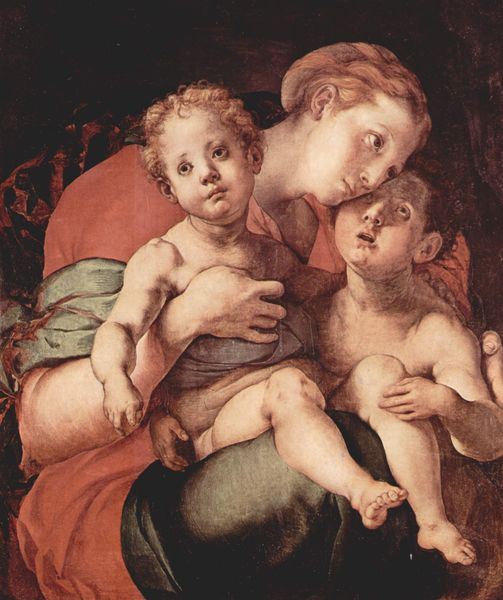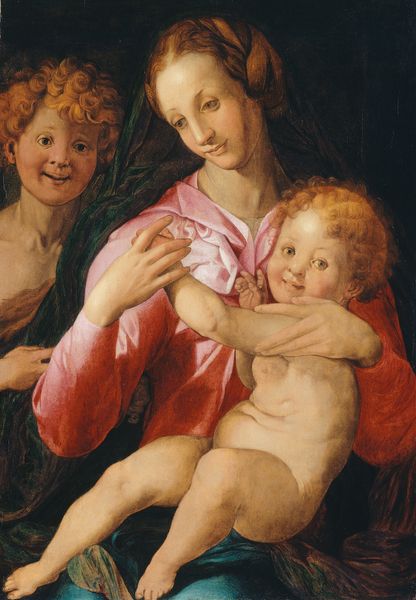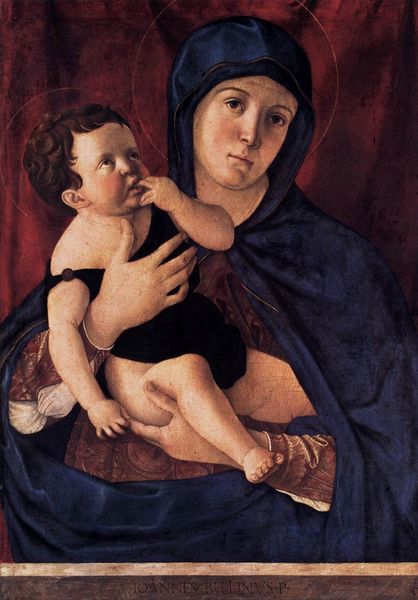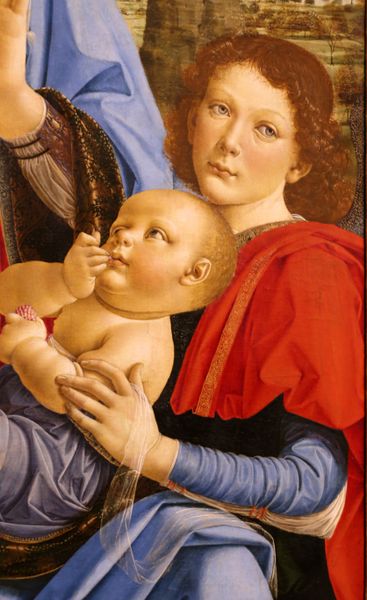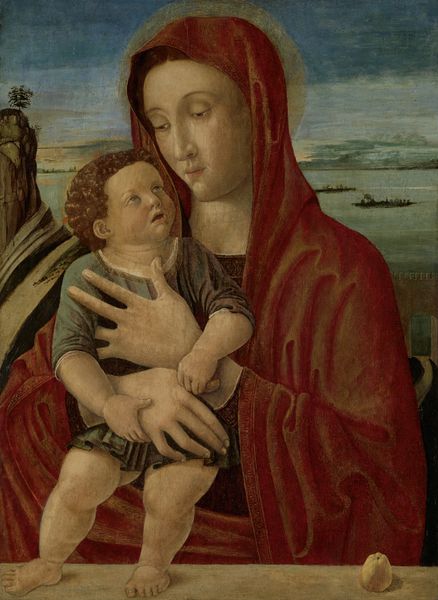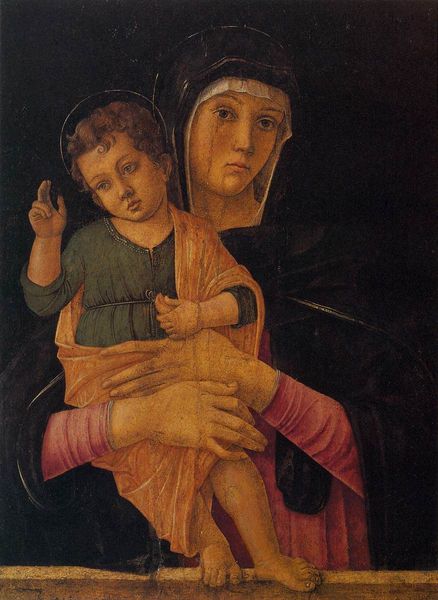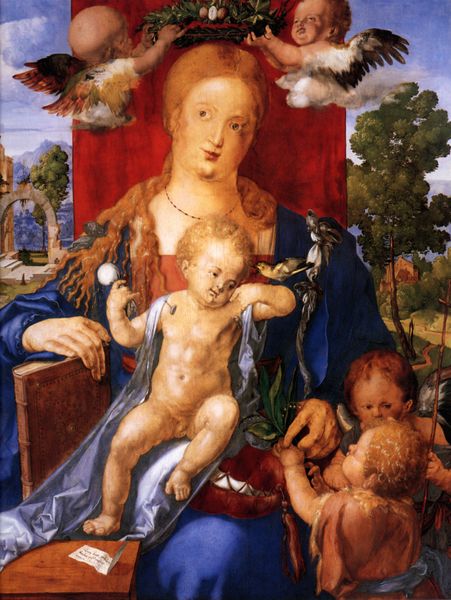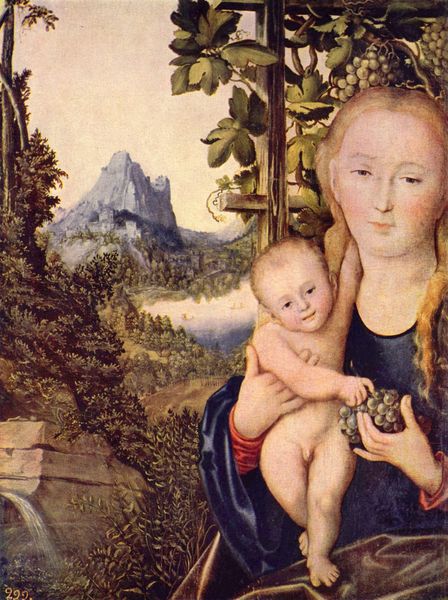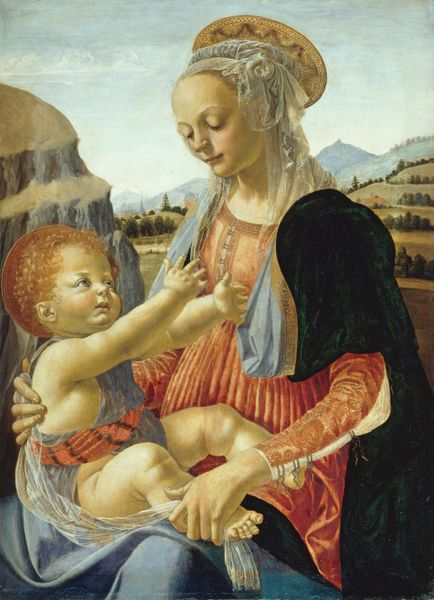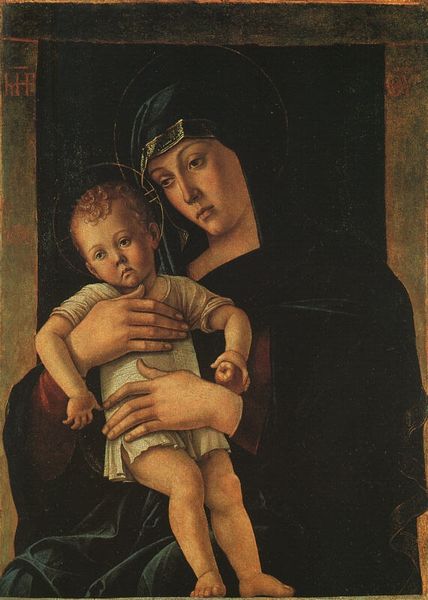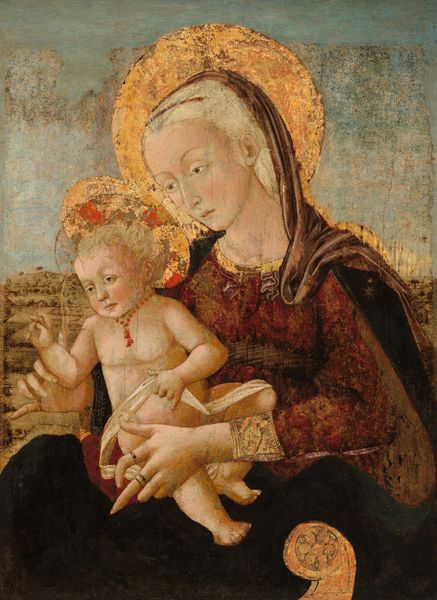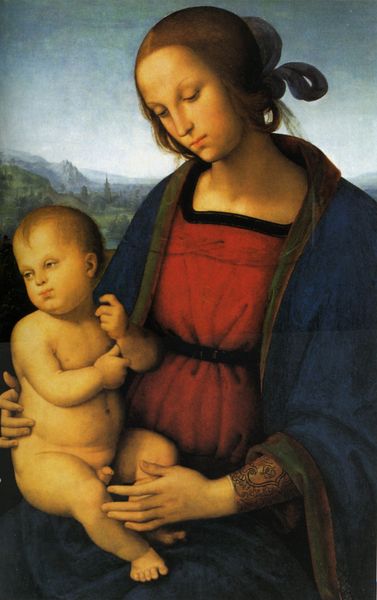
painting, oil-paint
#
portrait
#
painting
#
oil-paint
#
mannerism
#
oil painting
#
child
#
group-portraits
#
christianity
#
human
#
history-painting
#
italian-renaissance
Copyright: Public domain
Curator: I find myself captivated by the composition. Pontormo’s Madonna and Child with the Young Saint John, created around 1524, presents a fascinating tableau. Editor: Yes, there’s an unsettling stillness. The disproportion, the oddly muted palette…it verges on haunting, doesn't it? Curator: Consider the historical context. Mannerism emerged in a time of religious and political upheaval. How did this anxiety permeate the materials, the artistic choices made during production? Editor: The elongated figures, that strange sense of weightlessness – it speaks to the artificiality inherent in Mannerist aesthetics. It feels self-consciously stylized. Look at the way the Madonna's hand awkwardly cradles the Christ Child. Curator: And let's consider the labor involved. These weren't mere religious exercises. The commissioning, the pigment preparation, the apprenticeship system… all embedded in a complex social fabric. The work reflects those power dynamics. Editor: Undoubtedly, the patronage shaped its creation, yet I’m most intrigued by Pontormo’s handling of paint itself. Observe how the soft modeling of faces contrasts with the almost sculptural quality of the drapery. What do you make of the odd, architectural shapes in the landscape background? They seem as emotionally fraught as the foreground figures. Curator: The availability of specific pigments would influence the palette too. Ultramarine blues, for example, were costly. Their usage signified wealth. We also mustn't overlook how trade routes facilitated material exchanges. This painting wasn’t born in a vacuum; it’s the result of economic forces. Editor: Absolutely, and knowing that, one cannot ignore how that odd coloration gives it such a unique feel, almost other-worldly, perhaps, but equally melancholic and deeply human in their subtle interplay of gesture and gaze. Curator: I agree. By acknowledging the labor and market, the socioeconomic elements behind art, we move beyond idealised notions and gain a more truthful experience of our existence and history. Editor: True, and the effect this materiality produces leads one to reflect on the artfulness within these images. Their aesthetic arrangement serves as a potent signifier of profound artistic intentions.
Comments
No comments
Be the first to comment and join the conversation on the ultimate creative platform.
